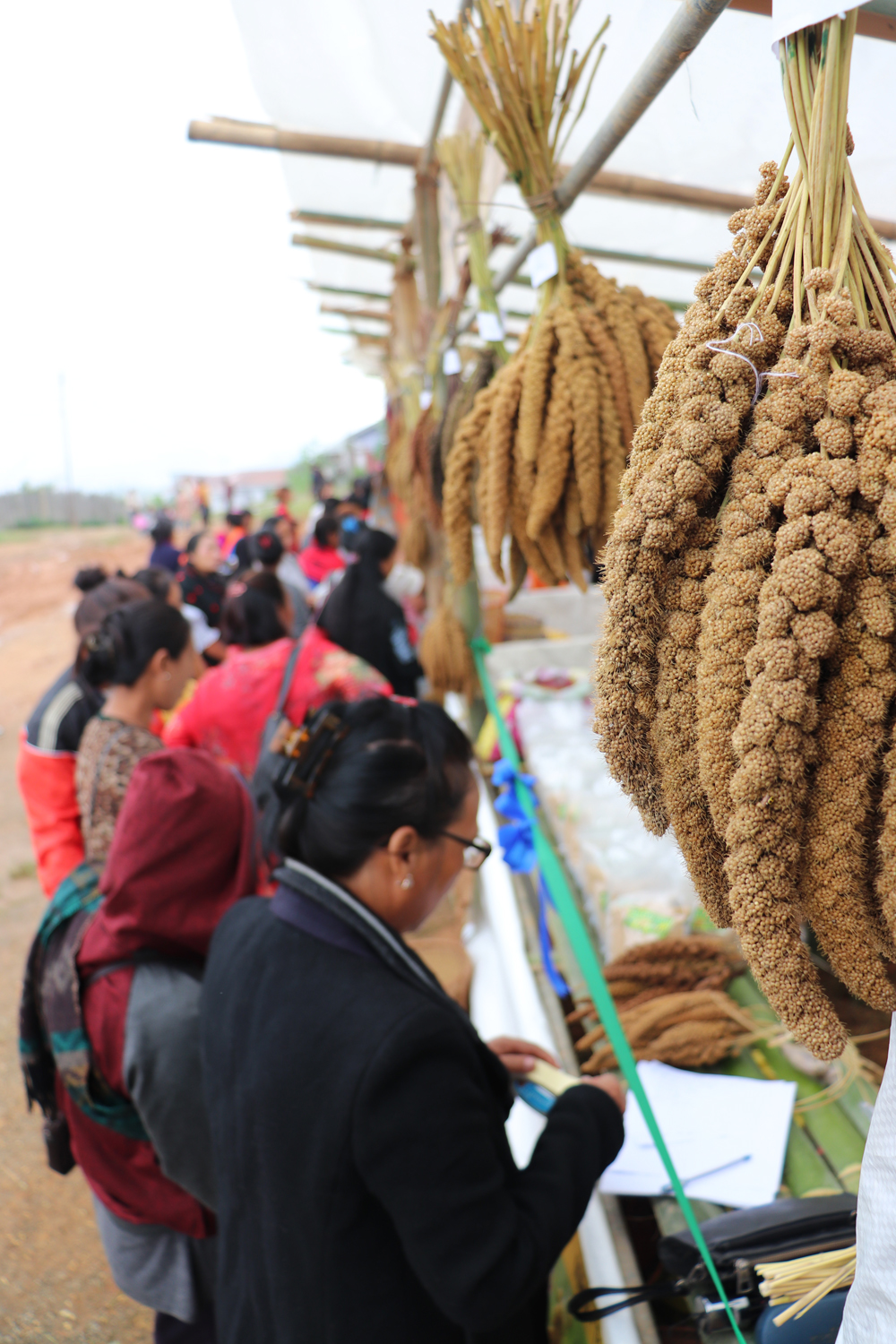Share

DIMAPUR — Expounding that millet has played an important role in the food culture and livelihood of the Nagas, the coordinator of North East Network (NEN), Wekoweu Tsuhah, urged the people to reintegrate millet back into the food and farming systems saying, “A part of our culture is lost with the loss of a crop.”
Tsuhah stated this during the 3rd millet festival held at Shamator public ground on August 5. The festival was organised by the Self Employed Women’s Association (SEWA), Millet Network of India, Department of Agriculture and North East Network (NEN) on the theme “Millets for community resilience.”
Reminding that millet has played an important role in the food culture and livelihoods of the Nagas, she however stated that its cultivation and consumption has dwindled due to multiple reasons.
Maintaining that millet is a cultural right, she stressed that it should be reintegrated back into food and farming systems. She added that millets offer multiple securities such as food and nutrition, livelihood, and ecology given its climate resilient characteristic.
She, therefore, appealed to all stakeholders including youth, women, community institutions, government, and CSOs to work collectively to promote millets.
The district agriculture officer Shamator, L Mongsanger, informed that for forty to fifty years, there was a significant decline in millets. He has attributed to a lack of awareness about the nutritive value of millets, PDS rice supply, absence of technology such as de-husking machines for the decline.
[bsa_pro_ad_space id=1]Referring to a recent survey conducted by the Agriculture department, he informed that the total area of millet cultivation in Shamator was only 40-50 hectares. He called upon the people to increase millet production and make Shamator a millet district.
Elaborating on the nutritional value of the crop, he invited the gathering to revive the importance of millet. He informed that the department would provide millet seeds including hybrid or high-yielding varieties and that surplus produce would be procured by the department at a good price.
Mongsanger informed that demonstration and training would be provided at district, block and village levels to promote millets. He also stated that the department along with SEWA and NEN would arrange market linkages. Besides, he stated that the department would give 15 de-husking machines to 15 select villages through active SHGs and organisations.
At the festival, the DAO handed over 6 millet de-husking machines and a maize thresher to women SHG and other organisations.
Highlights of the festival included a farmers’ market, which was participated by SEWA members from seven villages with a diverse range of vegetables, fruits, pulses and millets; a millet food stall set up by SEWA members who served a range of both traditional and innovative cuisine to over 350 participants; exhibition stalls to showcase and sell millet products and seeds.
It stated that speeches were also delivered by the general secretary of Yimkhiung Tribal Council (YTC), president of Shamator Town Public Forum (STPF), head GB of Chassir village and chairman of Sanghphur village council.
It stated that speeches were also delivered by the general secretary of Yimkhiung Tribal Council (YTC), president of Shamator Town Public Forum (STPF), head GB of Chassir village and chairman of Sanghphur village council.